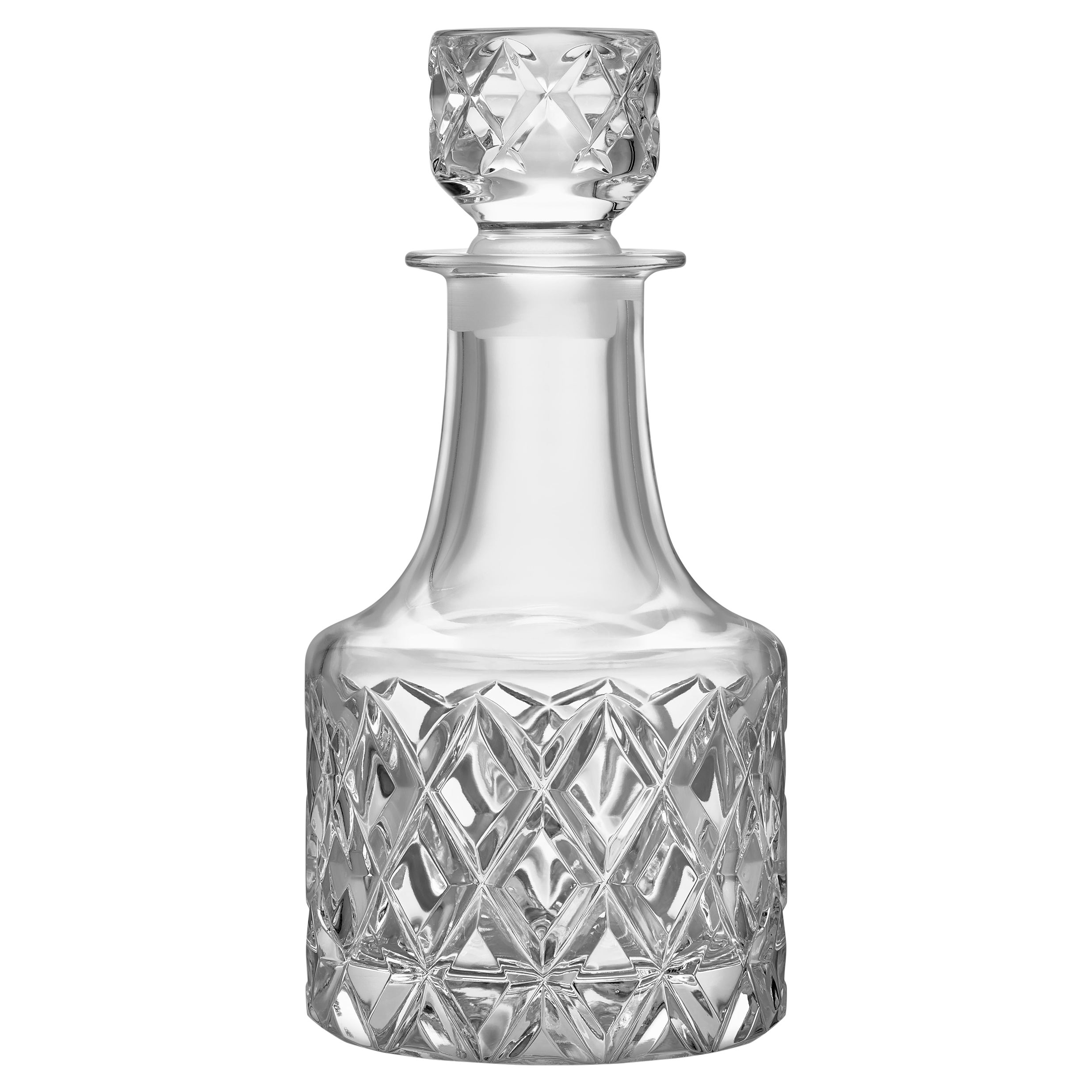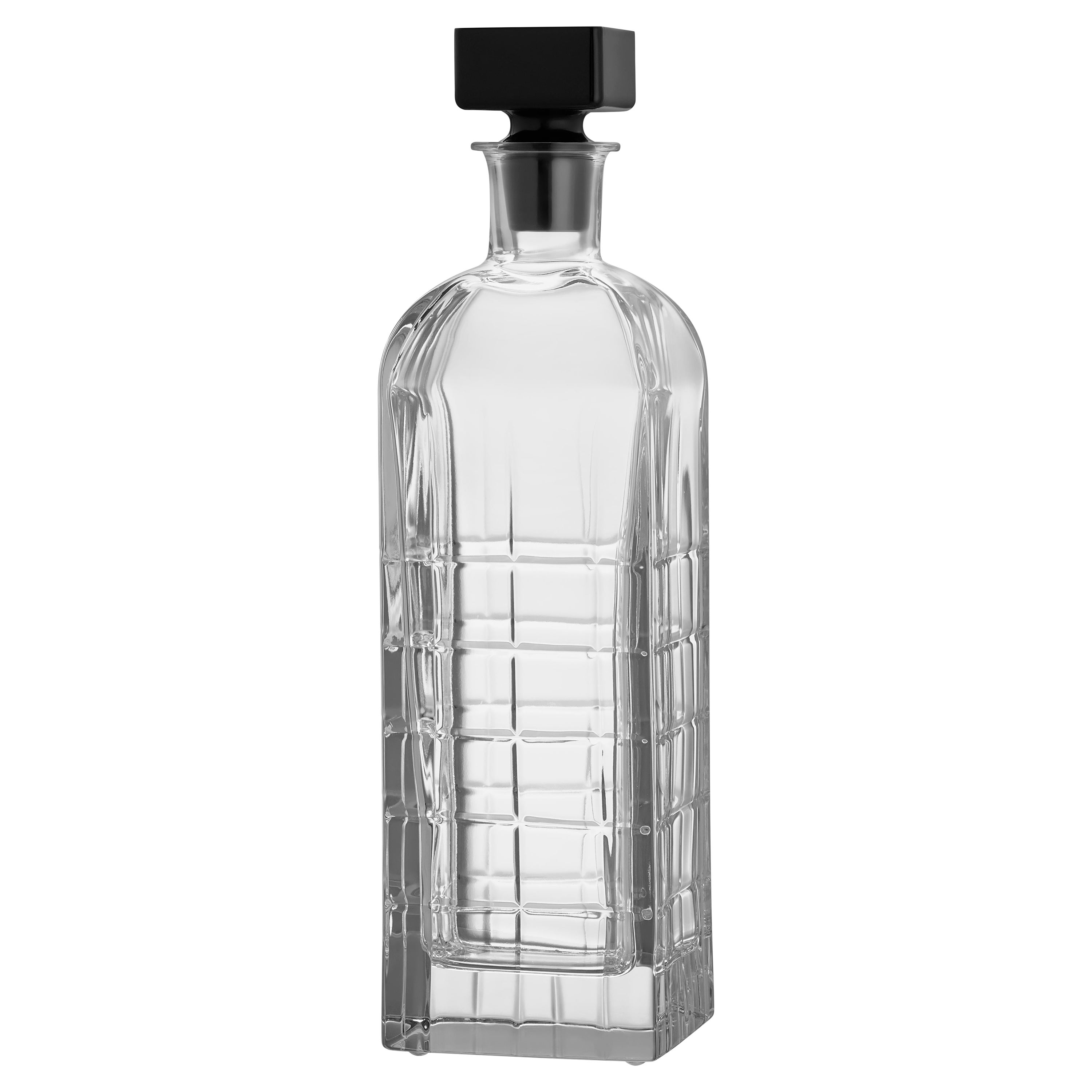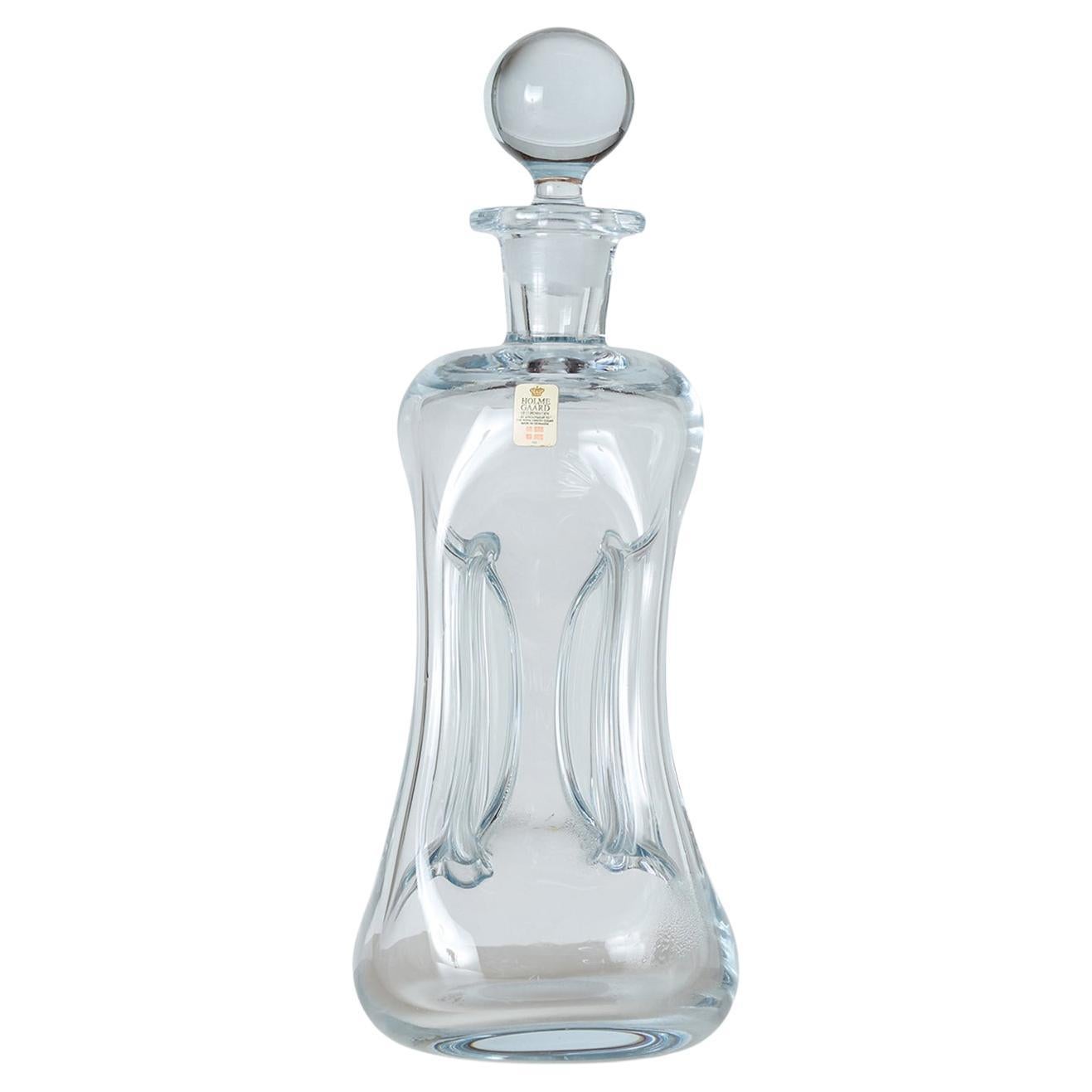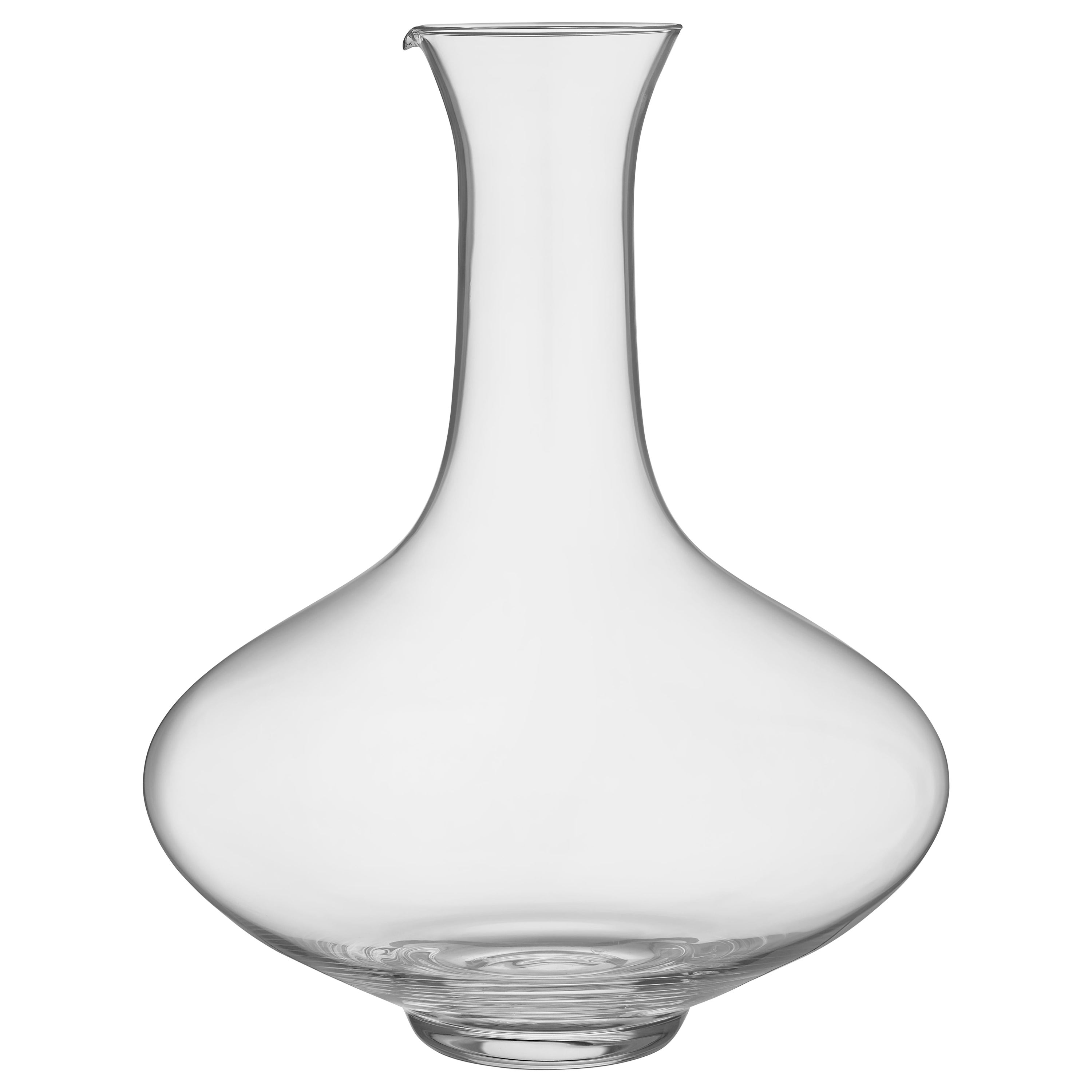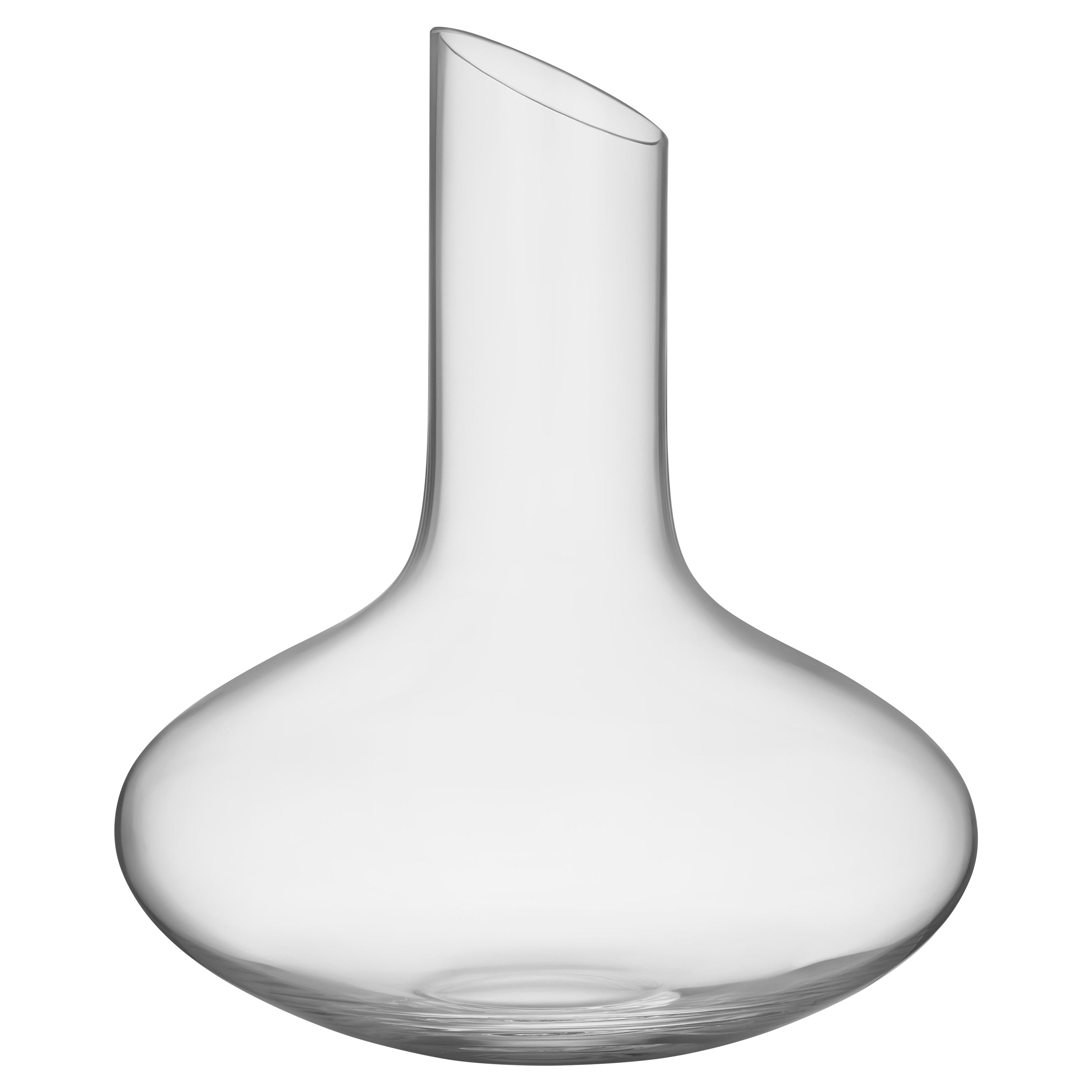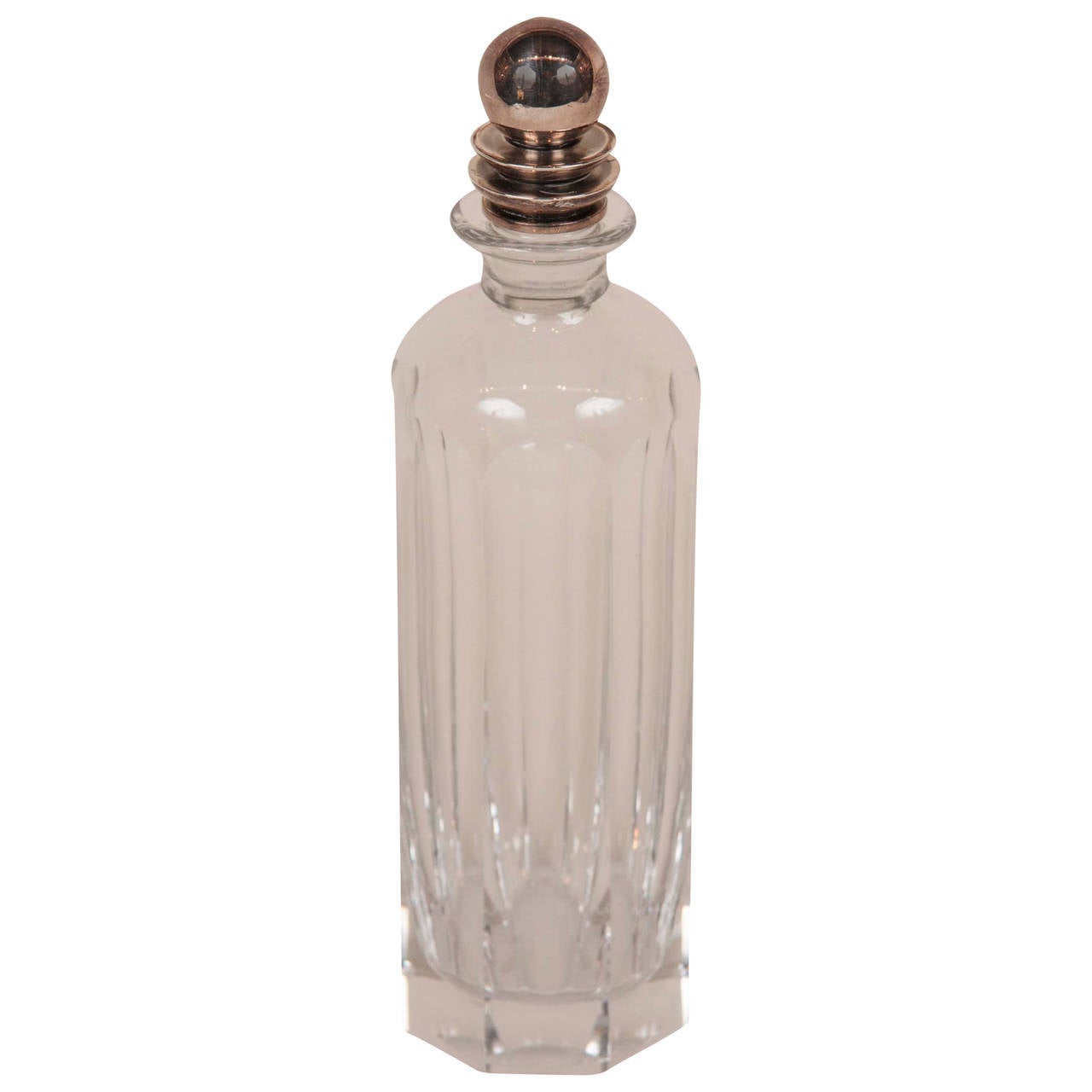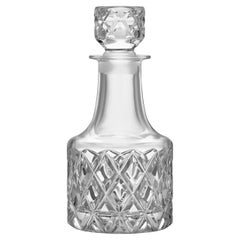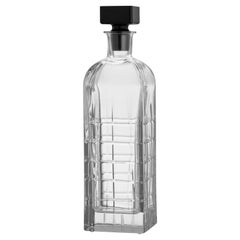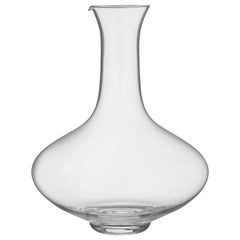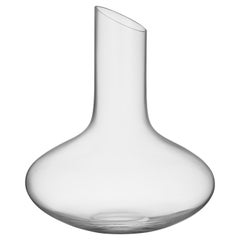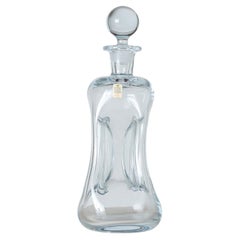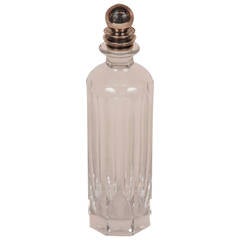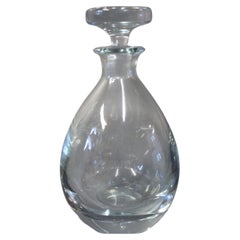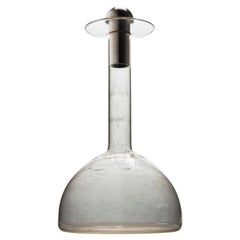Want more images or videos?
Request additional images or videos from the seller
1 of 5
Orrefors Nobel Decanter
$600per item
£454.07per item
€521.52per item
CA$853.23per item
A$925.08per item
CHF 487.51per item
MX$11,249.83per item
NOK 6,065.44per item
SEK 5,735.87per item
DKK 3,893.47per item
Quantity
About the Item
In 1991, Gunnar Cyrén designed the Nobel decanter for the 90th anniversary of the Nobel Prize. The decanter, which holds 40 oz, is made of crystal, and the glass stopper at the top is hand-painted with golden details. To this day, Nobel Prize-winners and royalty use the decanter from the Orrefors Nobel collection every December at Stockholm City Hall. The decanter is mouth-blown in Sweden.
- Creator:Gunnar Cyren (Designer)
- Dimensions:Height: 11.81 in (30 cm)Diameter: 5.12 in (13.01 cm)
- Materials and Techniques:
- Place of Origin:
- Period:
- Date of Manufacture:2023
- Production Type:New & Custom(Current Production)
- Estimated Production Time:Available Now
- Condition:
- Seller Location:Wilkes Barre, PA
- Reference Number:Seller: 62679821stDibs: LU8658234977132
Orrefors
Orrefors is a world-renowned crystal brand with a heritage dating back to 1898. The design is characterized by timeless Swedish aesthetics, functionality, sustainable quality, and craftsmanship. Since the early 1900s, Orrefors has contributed a significant part to the movement and style of Scandinavian Design. The high-quality glass has been the main focus since the beginning, and products by Orrefors are still, to this day, requested for prestigious events, such as the Nobel Banquet. The brand is presented at some of the most exclusive department stores and galleries all over the world.
About the Seller
5.0
Vetted Professional Seller
Every seller passes strict standards for authenticity and reliability
Established in 1898
1stDibs seller since 2023
24 sales on 1stDibs
Typical response time: 1 to 2 days
- ShippingRetrieving quote...Shipping from: Wilkes Barre, PA
- Return Policy
Authenticity Guarantee
In the unlikely event there’s an issue with an item’s authenticity, contact us within 1 year for a full refund. DetailsMoney-Back Guarantee
If your item is not as described, is damaged in transit, or does not arrive, contact us within 7 days for a full refund. Details24-Hour Cancellation
You have a 24-hour grace period in which to reconsider your purchase, with no questions asked.Vetted Professional Sellers
Our world-class sellers must adhere to strict standards for service and quality, maintaining the integrity of our listings.Price-Match Guarantee
If you find that a seller listed the same item for a lower price elsewhere, we’ll match it.Trusted Global Delivery
Our best-in-class carrier network provides specialized shipping options worldwide, including custom delivery.More From This Seller
View AllOrrefors Sofiero Decanter
By Gunnar Cyren
Located in Wilkes Barre, PA
The decanter in the Sofiero collection from Orrefors, designed by Gunnar Cyrén in 1960, is a timeless Scandinavian classic. It has a deep-cut motif, which beautifully refracts light ...
Category
2010s Slovenian Glass
Materials
Crystal
$350 / item
Orrefors Street Decanter
By Jan Johansson
Located in Wilkes Barre, PA
Street Decanter from Orrefors holds 35 oz and is ideal for serving spirits. The decanter has a checked motif of straight lines inspired by the criss-cross streets and avenues of Manh...
Category
2010s Slovenian Barware
Materials
Crystal
$375 / item
Orrefors Difference Decanter Magnum
Located in Wilkes Barre, PA
Difference Decanter Magnum from Orrefors is a table centerpiece. The decanter is intended for decanting, aerating, and serving all types of wines. It ho...
Category
2010s Swedish Glass
Materials
Crystal
$350 / item
Orrefors Enjoy Decanter
Located in Wilkes Barre, PA
Enjoy Decanter from Orrefors, holding 34 oz, has a bowl-shape with a tapered neck, making it ideal for serving wine, as well as water. With its generous size and large diameter at th...
Category
2010s Turkish Pitchers
Materials
Crystal
$100 / item
Orrefors More Carafe
Located in Wilkes Barre, PA
More Carafe from Orrefors holds 50 oz and is intended for both water and wine. Aerate wine in the carafe by filling it to the widest point. The carafe has an indented bottom, which p...
Category
2010s Turkish Pitchers
Materials
Crystal
$100 / item
Orrefors Metropol Decanter
Located in Wilkes Barre, PA
Metropol Carafe holds 34 oz and is an elegant centerpiece for the set table, ideal for serving either wine or water. The carafe is mouth-blown in Sweden by expert glassblowers and in...
Category
2010s Swedish Glass
Materials
Crystal
$295 / item
You May Also Like
Kluk Kluk Decanter by Jacob Bang for Holmegaard
By Jacob Bang
Located in San Francisco, CA
Tall clear glass decanter with indented sides, flared neck, and original stopper. Named for the cheerful "kluk kluk" sound it makes when pouring. Originally designed by Bang for Kast...
Category
Vintage 1960s Danish Modern Barware
Materials
Glass
Georg Jensen Crystal Decanter
By Harald Nielsen
Located in Stamford, CT
An Art Deco style crystal pyramid decanter with a silver top designed by Harald Nielsen in the first half of the twentieth century.
Category
Vintage 1940s Danish Art Deco Bottles
Materials
Crystal, Silver
Glass Decanter by Strömbergshyttan Sweden dated back to 1950s
By Strombergshyttan
Located in Lejre, DK
This glass decanter was produced by Strömbergshyttan, a prominent Swedish glassworks company, around the 1950s. Strömbergshyttan, originally established in 1876 as Lindefors Glasbruk...
Category
Vintage 1950s Swedish Scandinavian Modern Glass
Materials
Glass
Glass Decanter by Gentner Design
By Christopher Gentner
Located in Geneve, CH
Glass decanter by Gentner Design
Dimensions: D 15.2 x H 28 cm
Materials: glass, brass
A place to ready the tastes and hidden intoxicating offerings of your libation to the evening.
...
Category
2010s American Post-Modern Serving Pieces
Materials
Brass
$430 / item
Dansk Wine Carafe by Gunnar Cyren
By Dansk, Gunnar Cyren
Located in Miami, FL
Made in Denmark. Vintage glass decanter designed by Gunnar Cyrén, circa 1980. Tall, beaker shaped pitcher with a sculpted teak stopper is the st...
Category
Vintage 1980s Danish Scandinavian Modern Barware
Materials
Glass, Teak
Glass Decanter, Completely Handcrafted in Chicago
By Christopher Gentner
Located in Chicago, IL
A place to ready the tastes and hidden intoxication offerings of your libation to the evening.
Category
2010s American Modern More Dining and Entertaining
Materials
Stainless Steel
More Ways To Browse
Silver And Glass Coffee Carafe
Vintage Black Pitcher
19th Century Glazed Stoneware Pitcher
Antique Tin Pitcher
Japanese Jug
Jug Heads
Smoke Rings
Antique Claret Decanter
Blue Pottery Jug
Silver Gilt Ewer
Tiffany And Co Sterling Silver Pitcher
Vintage Glass Tea Pitcher
19th Century Earthenware Pitchers
Ceramic Water Pitcher
Vintage Green Glass Jugs
Antique Enamel Jug
Antique Salt Glaze Jug
Antique Salt Glazed Jug
